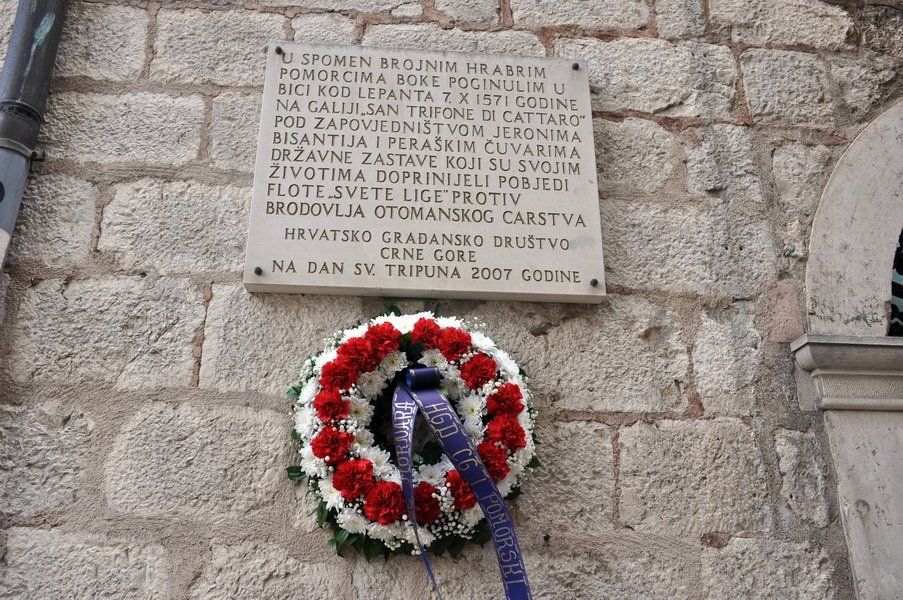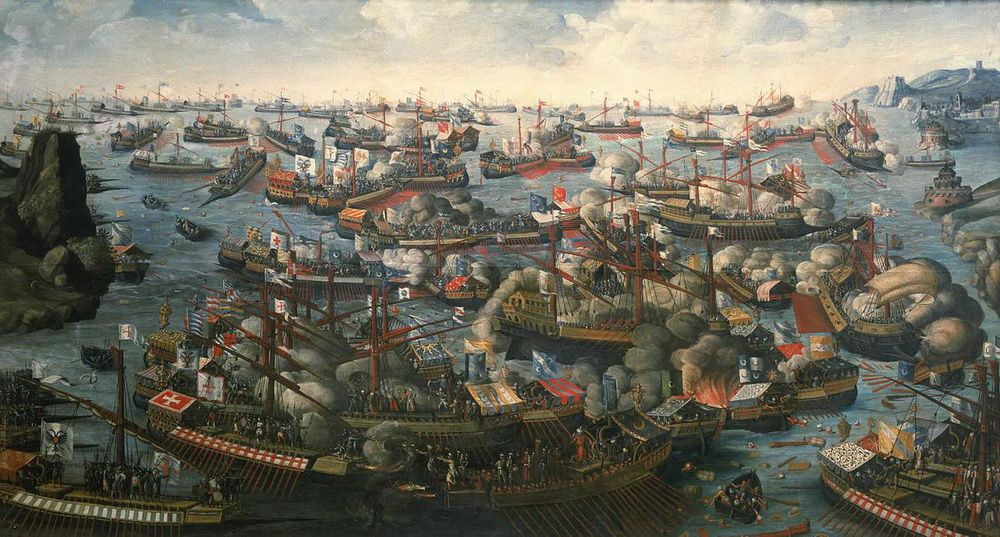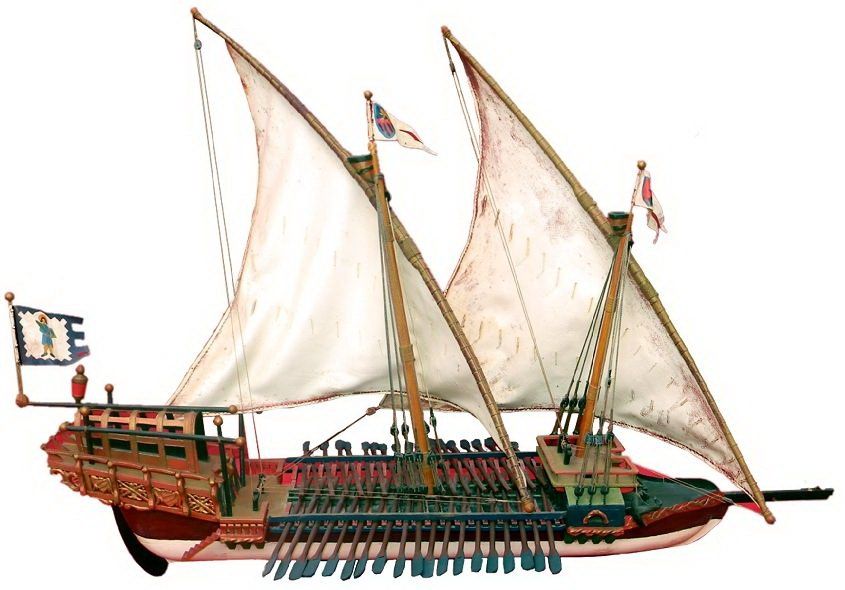The Holy Mass was led by the Vicar General of Kotor Diocese Don Anton Belan, who said that the Cathedral of St. Tripun was particularly related to the two significant battles that occurred in the 16th and 17th centuries, one at the sea at Lepant (1571), another on the mainland to Vienna (1683), when the Army of the Ottoman Empire was defeated.
"These battles were crucial in shaping and preserving of, at that time, a mostly Christian Europe. The battle at Lepant occurred on this day, and also on a Sunday in which “St. Tripun Kotorski" took part with about 250 rowers, soldiers and commander Jeronim Byzantium. There were seven of such galleys within the Venetian fleet at the eastern Adriatic coasts. Some lost most of the crew, and the galleon from Kotor, unfortunately, lost all its crew. Today, we remember not only the death of the citizens of Kotor, Perast, Boka but of all the dead, those who won and those who were defeated.
This cathedral is linked to the battle at Lepant with the name “St. Tripun Kotorski", and with the battle near Vienna because of the cross that is kept in this cathedral by which Marko D 'Aviano capuchin blessed the army of Polish king III of Sobieski, who went to help Vienna," said don Belan.
Battle at Lepant – Holly Mass for the victims
He thanked everyone on liturgical communion, especially members and the Admiral of the Boka Navy, pilgrims from Zagreb and Slovenia, members of the mixed chorus "Adoramus" from Ljubljana, representatives of HGD in Montenegro and the MNE Maritime Museum who placed a wreath on the panel commemorating the battle on Lepant.
Artistic image of the battle at Lepant
Namely, on October 7th, 1571, at Lepant (today's Naupactos in Greece) there was the biggest naval battle of boats on oars and sails in history, in which the Christian, the so-called Holy League fleet and the Islamic Osmanlian fleet met. Over 500 galleys and over 150,000 sailors and soldiers participated on both sides, and Christians led by Don Huan of Austria won the powerful Turkish fleet of Admiral Ali Pasha.
That this was a fierce battle was also confirmed by the fact that in this place there was about 90 percent of all the warships that sailed on that day to the Mediterranean. After a decisive fight that, as per the statements of chronicles at that time, left a red sea of blood behind, 83 percent of all Turkish ships and nearly half of soldiers and sailors were destroyed. 117 Turkish galleons were destroyed or captured, and the Turks also had about 25,000 dead and 7.5,000 captured sailors, versus 14 destroyed Christian gala with 10,000 dead and 2,5,000 wounded soldiers. From the defeat experienced at Lepant, Turks, as a naval force, have never recovered.
One of the most prominent moments in the rich Boka naval past was the participation of "San Trifone di Cattaro" ("St. Tripun Kotorski") in the Lepant battle. Namely, the Adriatic towns from Kopar to Kotor equipped and sent to battle a total of eight of their gauls which participated in the fleet of the Holy League, composed of warships of the Pope, Venice, Genoa and Spain. There were about 88,000 sailors and soldiers in the Fleet of the Holy League, and a total of 208 gauls from the Greek communes from Crete, Cefalonia, Levkasa and Corfu, the galleon of the Adriatic Command, ships from Sicily, Naples, Savoy gala, Genoa, Malta, Spain warships and 12 Pope’s galleons. Among them was the "St. Tripun Kotorski" with 175 crewmembers and captain Jerome Byzantium, and our warship was particularly emphasized by the heroism of the crew and the skills of its commander.
Namely, after the ignorance of part of the Genoa gaul headed by the famous admiral Andrea Doria, who paddled and slipped far away to the south, a huge hole was created on the southern wing of the Holy League fleet, the "St. Tripun Kotorski" galleon together with those of Rab and Trogir and a dozen Venetian ones, had, on its own initiative, filled the gloomy void through which a third of the Turkish fleet tried to break through and encircle the majority of St League's forces.
Model of the gallion SAINT TRIPUN KOTORSKI
This hole was solemnly decided to be closed by captains Jeronim Byzanti from Kotor, Ivan Dominis from Rab and Kristofor Lucic from Trogir and their colleagues from Venice on their own initiative. This was, however, a practical suicide decision - they were indeed able to stop the Turkish invasion and while the Turks were dealing with them, the Christians had received reinforcements from the center but it was unfortunately too late for some of our people. Because of their heroism, they paid a terrible price - the "St. Tripun Kotorski" galleon sunk, and all its crew killed along with the Captain Jeronim Byzantium. There were only a handful of survivors in the Rab gaul, and there were about 160 dead in the galleon from Trogir. In particular, the sailors of Boka were impressed with their heroism, because "St. Tripun Kotorski" sustained at the same time the attack of eight Turkish ships, and for one dead sailor from Boka, there were seven to eight Turks.
"This tells us about the horrors that these people had passed, but if it there were not for them the history would certainly be different - the Turkish breakthrough would have succeeded, the battle would collapse on this weakest part of the Christian frontier, and the whole history of the Western Mediterranean would probably be much different from what we know now. After the death, Jeronim Byzantine was celebrated as a great hero in Boka, Dalmatia and the Allied fleet," said the Croatian historian Tonći Tadić who thoroughly studied the battle at Lepant and the role of people from the regions of former Yugoslavia in it. Namely, the crew of people from then Dalmatia stretching from Spiča in present-day Montenegro to Rab in Croatia took part in 19 gauls fighting at Lepant in the Holy League Fleet.
In addition to the complete crew of the "St. Tripun" galleon, people from Boka, as a sacrifice for the victory of the Holy League in this historic battle, also paid with the lives of seven of the 12 eldest sons of the most prestigious families in Perast, who traditionally performed the Allied Guard of the Venetian admiral Sebastian Veneri, on the command boat of the Holy League Fleet.
The Diocese of Kotor said that "the winners of the Lepant battle were deeply rooted in the foundations of Christian Europe."
Text by S.L., on October 8th, 2018, read more at Boka news











